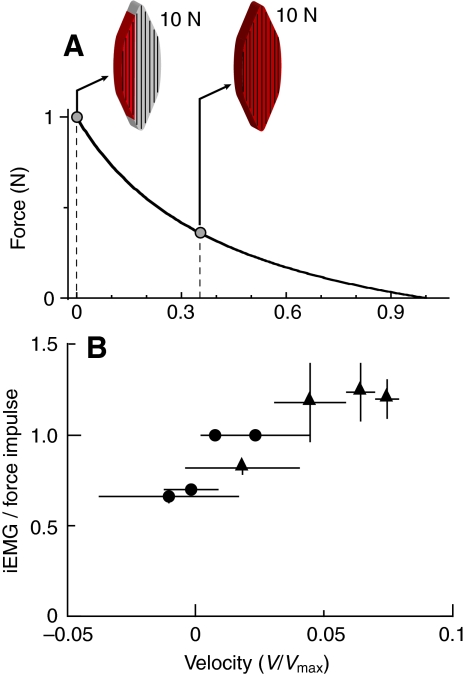Fig. 3.
Tendons can reduce the metabolic cost of muscle activity during running by reducing the volume of muscle that must be active to produce force. (A) A schematic to show how the shortening velocity of a muscle affects the muscle volume required to generate a given force. A hypothetical force–velocity curve is given for a single motor unit in a limb muscle composed of approximately 30 such units. Each motor unit is capable of producing 1 N of force, when isometric. If the muscle must develop 10 N of force (during stance phase support, for example), this force can be produced with 10 active motor units if the muscle is isometric. If the muscle contracts at an intermediate shortening velocity, at which muscle power is maximized, the force output of each active motor unit is reduced to ∼0.30 N, and the entire muscle must be active to develop the same 10 N of muscle force. (B) Data from measurements of average muscle shortening velocity and recruited muscle volume required to generate force in running turkeys support the hypothesis presented in A. The rectified integrated EMG signal (iEMG) per unit force developed is used as a proxy for recruited muscle volume. The average iEMG for level (circles) and incline (triangles) running at various speeds is directly proportional to the average relative shortening velocity during stance (modified from Gabaldon et al., 2008).

